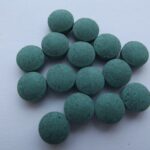CPAP Vs. APAP
In the landscape of sleep disorder treatments, Continuous Positive Airway Pressure (CPAP) and Automatic Positive Airway Pressure (APAP) machines stand prominent. Both designed to ensure uninterrupted breathing during sleep, their distinct methods of operation offer various benefits and drawbacks. This comprehensive guide explores their differences, the recent CPAP device recall, ensuing lawsuits, and factors to consider when choosing the right device, providing a critical resource for patients, caregivers, and families.

Key Takeaways
- CPAP machines have one continuous pressure setting, while APAP machines automatically adjust pressure.
- APAP machines are more comfortable and potentially more effective over extended use.
- CPAP machines are more commonly prescribed by doctors and covered by insurance plans.
- Consultation with a physician is necessary to determine the appropriate device based on overall health, sleep patterns, and respiratory support needs.
Understanding CPAP and APAP Therapies
While both Continuous Positive Airway Pressure (CPAP) and Automatic Positive Airway Pressure (APAP) therapies are commonly prescribed for the treatment of sleep disorders, it is essential to understand the key differences and unique benefits of each to make an informed decision about your health. The advantages of APAP therapy include its ability to automatically adjust to the optimal air pressure needed during different sleep stages. This contributes to a more comfortable and uninterrupted sleep experience. On the other hand, potential drawbacks of CPAP therapy include a more rigid air pressure setting which may lead to discomfort for the user. While CPAP has been traditionally used and is proven effective, the flexibility of APAP can be more suitable for certain individuals, demonstrating the importance of personalized treatment approaches.
The Basic Principle of CPAP Machines
In order to comprehend the functionality of CPAP machines, one must break down the basic principle upon which these devices operate, and understand that they work by delivering a steady stream of pressurized air to maintain an open airway during sleep. This continuous pressure prevents the collapse of the airway, a common occurrence in conditions such as sleep apnea. When making an effectiveness comparison between CPAP and other sleep therapy devices, such as APAP, one must consider the patient's comfort and tolerance towards a constant pressure level. Although effective in the short term, the long term effects of CPAP usage can vary, with some patients experiencing difficulties in adhering to therapy due to discomfort from the unchanging pressure level.
How APAP Machines Work
APAP machines function by dynamically adjusting the pressure throughout the night, and thus, they offer a more personalized approach to sleep apnea treatment. Unlike CPAP machines that exert constant pressure, APAP devices monitor breath-by-breath changes and adjust the pressure accordingly. This feature enhances the effectiveness of APAP in treating sleep disorders significantly, as it accommodates the varying needs of patients. However, it's important to weigh this against the potential risks associated with CPAP machines. Although CPAP is a more traditional therapy, it can lead to discomfort due to its unvarying pressure, potentially causing non-adherence to treatment. In contrast, the flexible pressure provided by APAP maximizes comfort, potentially improving therapy adherence and sleep quality.
Comparing Comfort Levels: CPAP Vs. APAP
Given that comfort plays a crucial role in therapy adherence, it is essential to compare the comfort levels provided by CPAP and APAP machines. From an effectiveness comparison standpoint, CPAP provides a consistent pressure level, which may be less comfortable for some individuals. APAP, on the other hand, adjusts the pressure based on the user's breathing patterns, potentially enhancing comfort levels. Long term user experiences with CPAP vs. APAP often reflect this difference. While CPAP users can find the continuous pressure uncomfortable over time, APAP users generally report higher comfort levels due to the machine's adaptability. However, both machines have proved effective in treating sleep apnea, and the choice largely depends on individual needs and preferences.
Efficacy of CPAP and APAP in Treating Sleep Disorders
The patient's choice between Continuous Positive Airway Pressure (CPAP) and Automatic Positive Airway Pressure (APAP) machines can significantly impact the efficacy of treatment for their sleep disorders. Studies comparing the effectiveness of APAP vs CPAP in sleep disorders have shown divergent results. Some suggest that APAP machines, with their ability to adjust air pressure as needed, can provide a more personalized treatment, potentially increasing efficacy. However, others emphasize that the constant pressure of CPAP machines can be equally effective. The comparison of treatment outcomes with CPAP and APAP is crucial to understanding their respective benefits and drawbacks. Ultimately, the effectiveness of both machines largely depends on individual patients' unique needs and their adherence to the prescribed therapy.
The Downside of CPAP Machines
While many patients find relief with Continuous Positive Airway Pressure (CPAP) machines, it's important to note that these devices do have certain drawbacks that can affect their overall user experience. One of the main potential risks is discomfort caused by the consistent level of air pressure, which can lead to dryness, nasal congestion, and skin irritation around the mask area. Some users also struggle with the noise produced by the machine, impacting their sleep quality and that of their partner. Additionally, the inconvenience of traveling with the machine and its maintenance requirements can be burdensome. Therefore, it's crucial for doctors and patients to consider these factors and explore alternatives like Auto-adjusting Positive Airway Pressure (APAP) machines, which might offer a more comfortable and flexible solution.
The Advantages of APAP Machines
Undeniably, APAP machines present several advantages over their CPAP counterparts, and chief among these is their ability to automatically adjust the pressure setting throughout the night. This dynamic feature ensures a more personalized therapy session tailored to the patient's specific sleep patterns and needs. Furthermore, the advantages of APAP machines extend to a greater level of comfort, as they can reduce the pressure when it is not needed, leading to a less disruptive sleep experience. However, it is crucial to acknowledge the potential risks of using APAP machines. Some patients may experience initial discomfort or dryness due to constant changes in pressure. Despite these risks, many find the adaptable nature and greater flexibility of APAP machines a compelling reason for their preference.
Assessment of Side Effects: CPAP Vs. APAP
In evaluating the side effects associated with Continuous Positive Airway Pressure (CPAP) and Automatic Positive Airway Pressure (APAP) machines, it's essential to take into account both the common and unique challenges posed by each device. In a side effects comparison, both CPAP and APAP may cause discomfort, skin irritation, and dryness. However, CPAP users often report difficulty tolerating the constant pressure, leading to non-adherence. On the other hand, APAP's varying pressure may result in fewer reports of discomfort but could cause issues in patients with certain heart conditions. Analysing the long term effectiveness, APAP seems to be a more user-friendly option, potentially leading to better treatment adherence. Yet, the choice between CPAP and APAP should be tailored to the patient's individual health needs and tolerance.
Personal Testimonials: Experiences With CPAP and APAP
Personal testimonials offer a wealth of insight into the lived experiences of individuals using CPAP and APAP machines for their sleep disorder treatments. These patient testimonials often highlight the effectiveness of the machines, their comfort levels, and any side effects experienced. For instance, many CPAP users report a significant improvement in their sleep quality and daytime alertness. However, some also mention discomfort due to the constant pressure. In contrast, APAP users often appreciate the auto-adjusting pressure, which can offer more comfort and adaptability. Despite these benefits, some users report initial challenges in getting used to the varying pressure. It's important to consider these user experiences when choosing a sleep disorder treatment, but remember that individual experiences can vary greatly.
The Role of Insurance in Choosing CPAP or APAP
One should not overlook the significance of insurance coverage when deciding between CPAP and APAP machines for sleep disorder treatment. Insurance coverage significantly influences the cost factor of these machines. Generally, insurance companies consider CPAP machines as the standard treatment for sleep apnea, making them more likely to be covered. However, APAP machines, despite offering more comfort and flexibility, might not be fully covered due to their higher cost. Thus, the extent of insurance coverage and reimbursement policies might influence the choice between these devices. It's essential for patients to consult with their insurance providers to understand their coverage specifics to make an informed decision about their sleep apnea treatment.
Addressing Common Concerns With CPAP Machines
Despite the widespread use of Continuous Positive Airway Pressure (CPAP) machines for sleep apnea treatment, there are common concerns among users, such as discomfort with the mask and the noise level of the device, which we will address in this section. One of the main CPAP machine limitations is the fixed pressure setting, which can be uncomfortable for some users. Additionally, the noise produced by the device can disrupt sleep. In terms of alternative treatments for sleep disorders, options such as lifestyle modifications, positional therapy, and oral appliances can be explored. However, it's essential to discuss these with a healthcare provider to determine the most suitable treatment plan. Remember, each alternative comes with its own set of benefits and potential drawbacks.
Exploring the Benefits of APAP Machines
In the realm of sleep apnea treatment, Automatic Positive Airway Pressure (APAP) machines present several notable benefits, which we will delve into in this section. The APAP machine performance is superior in its ability to adjust pressure levels throughout the night, responding to the patient's current needs rather than providing consistent pressure. This dynamic adjustment enhances comfort and effectiveness. APAP machines also offer flexibility, capable of acting as a standard CPAP machine if desired. In the APAP vs. BiPAP comparison, both devices offer adjustable pressure; however, APAP machines adjust automatically, making them more user-friendly. In conclusion, the benefits of APAP devices lie in their adaptability, automatic pressure adjustment, versatility, and user-friendliness, making them a suitable choice for many sleep apnea patients.
Making the Right Choice: Factors to Consider
Choosing between a CPAP and APAP machine entails a thorough understanding of your specific health needs and sleep patterns, and requires the consideration of several important factors. APAP vs. CPAP: Choosing the right machine often comes down to personal comfort, the severity of your sleep apnea, and your lifestyle. Factors to consider when deciding between APAP and CPAP include machine cost, noise level, portability, and the ability to adjust pressure settings. Your doctor can provide valuable insights based on your medical history and sleep study results. Ultimately, the right choice is the one that effectively manages your symptoms, improves your quality of sleep, and aligns with your lifestyle and comfort preferences.
The Future of Sleep Apnea Treatment: Beyond CPAP and APAP
As we explore the future of sleep apnea treatment, it is essential to consider that advancements may evolve beyond the current use of CPAP and APAP machines. The rise of alternative treatments and the integration of emerging technologies may lead to more personalized and effective solutions. Scientists are developing novel approaches, such as hypoglossal nerve stimulation and positional therapy, which show promise. Additionally, wearable technologies are being explored for their potential to track sleep patterns and detect apnea events. The future also holds potential for pharmacological interventions, currently in their infancy. With every advancement, the goal remains to improve patient comfort, adherence, and overall outcomes, ensuring a better quality of life for individuals living with sleep apnea.
The Role of Sleep Specialists in CPAP and APAP Therapy
Undoubtedly, sleep specialists play a pivotal role in diagnosing sleep disorders and prescribing appropriate treatment methods such as CPAP or APAP therapy, and their expertise is crucial in ensuring the effectiveness of these therapies. The role of sleep specialists extends into monitoring patient progress, adjusting therapy parameters, and providing ongoing support to maximize therapy benefits. They are instrumental in customizing treatment plans to the unique needs of each patient, underscoring the benefits of personalized treatment. By meticulously considering factors such as the severity of the sleep disorder, patient comfort, and lifestyle, sleep specialists can determine whether CPAP or APAP therapy is most suitable, thereby optimizing treatment outcome and enhancing patient adherence to therapy.
Frequently Asked Questions
Do CPAP and APAP Machines Require a Prescription, or Can They Be Purchased Over the Counter?
Both CPAP (Continuous Positive Airway Pressure) and APAP (Automatic Positive Airway Pressure) machines typically require a prescription from a healthcare provider. They are considered medical devices and are not available for over-the-counter purchase. Prescription costs can vary, and insurance coverage for these machines largely depends on the individual's health insurance policy. It's important to consult with your healthcare provider and insurance company for specific cost information.
Can a CPAP Machine Be Converted to an APAP Machine, or Vice Versa?
Conversion of a CPAP machine to an APAP, or vice versa, is not typically feasible due to machine calibration challenges. APAP machines have sophisticated algorithms to automatically adjust pressure, offering advantages over CPAP's static pressure setting. Any modification could risk the machine's functionality and patient safety. Therefore, such changes should only be considered under professional guidance. Always consult with a healthcare professional when considering changes to prescribed sleep apnea treatment.
What Is the Average Lifespan of CPAP and APAP Machines and When Should They Be Replaced?
The average lifespan of both CPAP and APAP machines is typically around 5 years. However, regular machine maintenance and care can extend this lifespan. Replacement is advised when machines start showing signs of wear or become less effective. Cost evaluation should be considered, balancing the cost of maintenance and repairs against purchasing a new device. Regular consultations with a healthcare professional are also crucial to monitor the effectiveness of the machine.
How Does the Use of CPAP and APAP Machines Impact Relationships, Particularly Bed Partners?
The use of sleep aids like CPAP and APAP machines significantly influences relationship dynamics, specifically for bed partners. These machines enhance sleep quality, reducing instances of sleep disruptions caused by disorders such as sleep apnea. Improved sleep often results in better mood and increased daytime energy, fostering positive interactions. However, the noise and physical presence of the machines may initially require adjustment. In sum, their use can bring about both challenges and improvements in the relationship environment.
What Is the Environmental Impact of Using CPAP and APAP Machines and Are There Any Sustainability Initiatives in Place for These Devices?
The environmental impact of using CPAP and APAP machines is minimal, however, energy efficiency improvements are continually being explored. Some companies have initiated recycling programs for these devices, reducing waste and promoting sustainability. Moreover, manufacturers are investigating lower energy consumption designs to decrease the environmental footprint. It's essential for users and manufacturers to consider the sustainability and environmental consequences of these devices.
Conclusion
In conclusion, both CPAP and APAP offer effective treatment solutions for sleep apnea and other sleep disorders. The choice between the two hinges on individual needs, comfort, and the specific recommendations of healthcare providers. As technologies evolve, future treatments may surpass these devices in efficacy and comfort. Until then, patients such as John, a long-time sleep apnea sufferer who finally found relief with an APAP machine, underscore the life-changing potential of these therapies.

This post has been generated by AI and was not reviewed by editors. This is Not legal advice. Please consult with an attorney.




